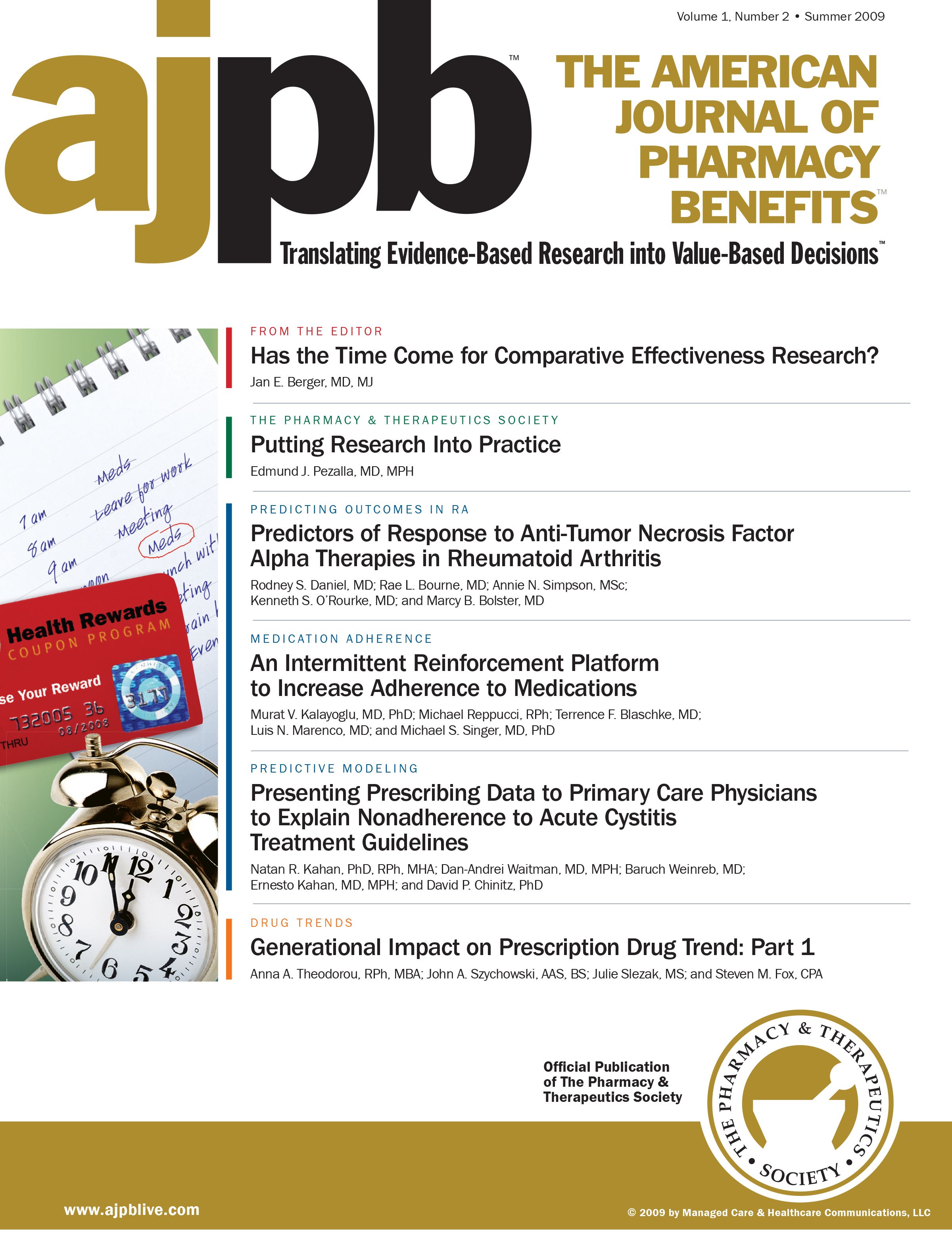Publication
Article
AJPB® Translating Evidence-Based Research Into Value-Based Decisions®
Putting Research Into Practice
Author(s):
This commentary encourages P&T committee members to be champions for assimilating new findings into medical practice and translating research into real outcomes.
The past 3 decades have seen the development and application of increasingly powerful decision-making tools to formulary and utilization management programs. Beginning with the evaluation of the quality of medical evidence by Cochrane through the new emphasis on comparative clinical effectiveness, hospitals, group practices, and managed care companies have brought these sophisticated tools to bear on a variety of serious clinical and economic issues. But knowing what to do and getting it done are 2 different things. This is where the science of technology transfer and translational research can help.
Ultimately, it will be up to physicians and other healthcare professionals to assimilate new findings into medical practice and translate research into real outcomes. Pharmacy and therapeutics (P&T) committees can play a major role in achieving this goal.
Physicians and patients often see pharmacy benefit structures and the accompanying utilization management programs as barriers. However, they can be seen not as barriers but as beacons providing guidance in an increasingly complicated world. Although providing this guidance via the formulary development process is an important function of P&T committees, committee members also should take an active role in promoting adherence to practice guidelines, development of practice quality measures, and increasing connectivity of physicians with benefits and claims data. By promoting attention and adherence to the medical evidence, P&T committee members will contribute significantly to improvements in medical outcomes.
I encourage physicians, pharmacists, and others involved in the P&T process to be champions within their organizations. In this role, we can stimulate and promote the discussion of medical evidence through conferences, seminars, and reading groups. We can promote the use of electronic medical records, especially electronic prescribing, as a means of reducing errors and becoming more connected to the pharmacy benefit. And we can discuss the value of working with—not against—the programs created to manage the cost and quality of care.
Outside the P&T committee, we can work together by publishing articles on innovations in practice, communications, and clinical programs. We can encourage our colleagues and other medical practitioners to participate in the activities of professional societies and to remain engaged in lifelong learning.
A recent study by Cavazos et al found that 84% of physicians interviewed did not prescribe nonsteroidal anti-inflammatory drugs according to guidelines because they were unfamiliar with the guidelines.1 Other problems with use of guidelines included perceived limited clinical value, inertia, and medical heuristics.
Many pharmacy benefit plans help to remind physicians of the use of guidelines through prior authorization, step therapy, and other programs. The members of P&T committees can help healthcare professionals to assimilate these and other guidelines by emphasizing the clinical basis for these utilization management tools. Other areas of change include earlier use of immune modulators for multiple sclerosis and early initiation of insulin for diabetes. These treatments have been shown to have benefits when instituted earlier in the disease process.
Members of P&T committees are a valuable source of clinical information and can be a resource for their colleagues in healthcare.







